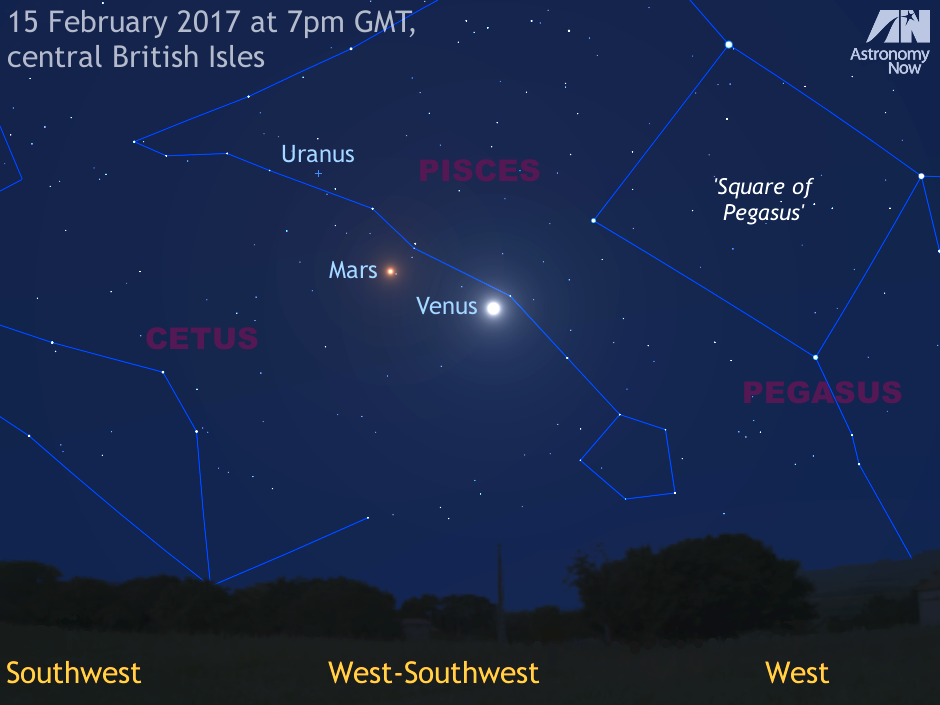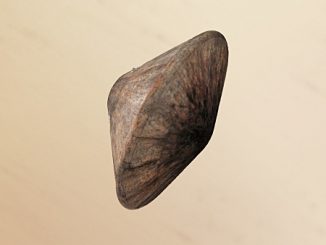
At UK dusk on 17 February, Venus lies 0.42 astronomical units (AU), or 39 million miles (63 million kilometres) from Earth. It has a 39.4-arcsecond-wide, 27 percent illuminated crescent that requires a telescope magnification of just 48x to make it appear the same size as an average Moon to the unaided eye. As the days pass, Venus’ phase decreases and its apparent size increases as the planet’s orbital motion carries it further around the Sun and nearer the Earth.
Planet Mars lies less than a span of a fist at arm’s length to the upper left of Venus until about the third week of the month, so it is easy to identify. On the night of Venus’ peak brightness the Red Planet shines at just magnitude +1.2, making it a full six magnitudes — or 250 times — fainter than its dazzling sibling. In a telescope, Mars’ disc is a tiny 4.8 arcseconds wide — one-eighth that of Venus — on account of a distance of 1.96 AU or 182 million miles (294 million kilometres).
To complete the evening planet ensemble, you may wish to seek out Uranus. The magnitude +5.9 gas giant lies 6.2 degrees (or slightly less than a 7x binocular field of view) to Mars’ upper left. Some 3.4 arcseconds in size, Uranus lies 20.52 astronomical units or 1,908 million miles (3,070 million kilometres) from Earth on 17 February.
Can Venus cast a shadow?
Returning to the brightest planet, there is a fun experiment that you might like to conduct if you live in (or have access to) an area where there is no light pollution — especially now that the Moon is rising after 8pm. Using our Almanac, select the city nearest you and note the time at which astronomical twilight ends — for the centre of the British Isles, this is currently about 7:20pm GMT.
Allowing at least 15 minutes for your eyes to become dark adapted, turn your back to Venus close to the time astronomical twilight ends and see if you can discern your shadow cast solely by the light of Venus on a west-facing fence or wall. You may need to use your peripheral vision to see it. While Venus remains visible until 9pm for much of the UK, you need to conduct this little experiment with Venus highest in the sky as soon as darkness falls.
I have twice seen my shadow cast by the light of Venus while working at the Mount John University Observatory under the pristine, exceptionally dark skies found at the heart of New Zealand’s South Island.
Inside the magazine
For a comprehensive guide to observing all that is happening in the coming month’s sky, tailored to Western Europe and North America, obtain a copy of the February 2017 edition of Astronomy Now.
Never miss an issue by subscribing to the UK’s biggest astronomy magazine. Also available for iPad/iPhone and Android devices.




